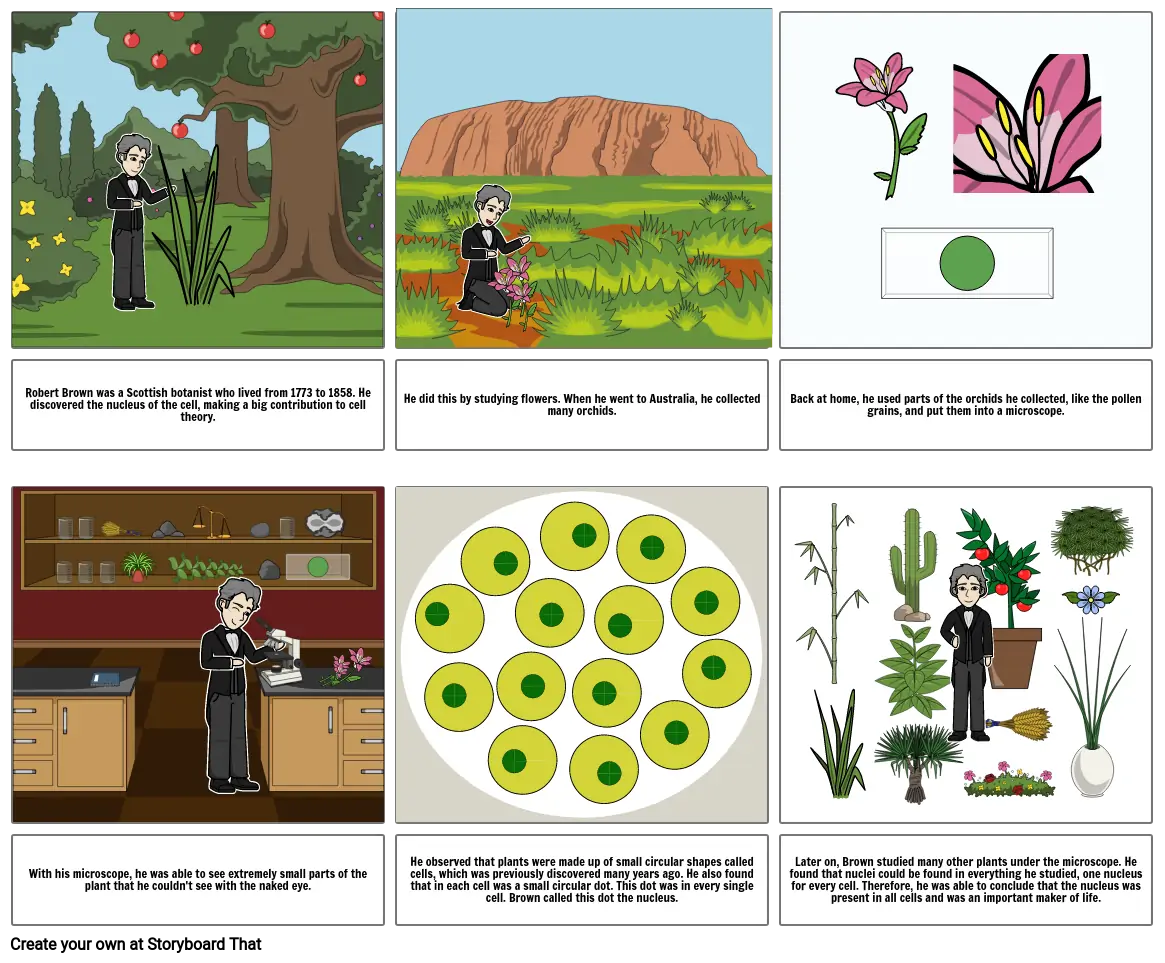AP Biology Contributions to Cell Theory CER Project

Storyboard Text
- Robert Brown was a Scottish botanist who lived from 1773 to 1858. He discovered the nucleus of the cell, making a big contribution to cell theory.
- He did this by studying flowers. When he went to Australia, he collected many orchids.
- Back at home, he used parts of the orchids he collected, like the pollen grains, and put them into a microscope.
- With his microscope, he was able to see extremely small parts of the plant that he couldn't see with the naked eye.
- He observed that plants were made up of small circular shapes called cells, which was previously discovered many years ago. He also found that in each cell was a small circular dot. This dot was in every single cell. Brown called this dot the nucleus.
- Later on, Brown studied many other plants under the microscope. He found that nuclei could be found in everything he studied, one nucleus for every cell. Therefore, he was able to conclude that the nucleus was present in all cells and was an important maker of life.
Over 30 Million Storyboards Created

